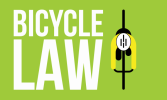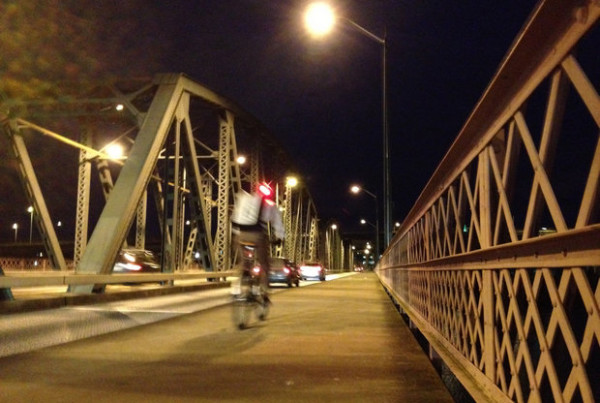The Sacramento Bee: ‘Ghost bikes’ mark deaths in Sacramento area
By Tony Bizjak
Published: Wednesday, May. 19, 2010 – 12:00 am | Page 1A
Last Modified: Wednesday, May. 19, 2010 – 10:52 am
They’re spooky. Painted stark white, stem to stern, they’ve appeared seemingly out of nowhere in recent weeks, each chained to a pole on a major Sacramento street.
They are “ghost bikes,” standing silent watch where cyclists have died.
The people responsible for them have kept a low profile. The spray-painted monuments, however, are striking, a form of guerrilla public art that has prompted debate, appreciation, and some unease.
The first one appeared on L Street downtown where a cyclist, who police say ran a red light, was crushed by a bus in March.
There’s another on Howe Avenue north of Highway 50 where a cyclist was struck and killed by a driver last month at 3:45 a.m.
The most recent showed up two weeks ago at Carlson Drive and H Street near the River Park neighborhood in Sacramento, where a cyclist collided with a van on a Sunday ride on day two of national bike month.
The riderless memorials are new to Sacramento, but have been popping up in other cities since 2003.
They confuse some passersby.
One Sacramento blogger thought the bike on L Street had to be part of a police bike-theft sting operation. Another blogged that it looked creepy. Yet another said she cried when she realized what the bike represented.
Some wonder if the bikes are a political statement. Are they saying bicycling is dangerous? Or that cyclists are victimized by drivers?
Local bicyclist and advocate Ryan Sharpe said the meaning is simple.
“It is not supposed to be a political statement,” he said. “It’s the bicycle community saying we lost a member right here, not trying to say whose fault it is, just that we lost one.”
Asked if he was involved, Sharpe demurred. It’s not about individuals, he said. “It’s a community effort.”
A friend, Rick Houston, who organizes “tweed rides” in vintage clothes on vintage bikes, readily acknowledges his role in two ghost bikes. They are not trying to whitewash the fact that some cyclists ride unsafely, Houston said.
“There are bicyclists, you scratch your head, and think, really?” he said. “I’m a fan of bicyclists accepting their responsibilities. This is serious.”
Jim Brown, of the California Bicycling Coalition, is among those who say the ghost bikes represent a maturing of the Sacramento bike community. Cyclists, he said, are seeing themselves not as individuals but as members of a group. The ghost bike activists did not know the cyclists who were killed.
The bikes reflect a core issue that Brown’s coalition and groups such as Sacramento Area Bicycle Advocates have been working on for years: How to push planners and politicians, as well as cyclists and drivers, to cooperate in making the roads safer for all users.
The issue has become more important as Sacramento streets get more crowded, causing more conflicts. Brown is optimistic safety will improve: As cycling’s popularity increases, planners will make more room on roads, legislators will write more realistic laws, and cyclists and drivers will get better at sharing tight quarters.
“If you look at cities with high rates of bike ridership, you see an inverse relationship between bikes and collisions,” Brown said. “The streets become safer for bicyclists. I like to think of it as an ecosystem that kind of adjusts.”
The current ghost bikes soon will disappear. But other ghost bikes, at other intersections, may follow.
John Boyer, founder of Edible Pedal catering service, helped put up the L Street bike. “We need to draw the attention to making it safer to ride,” he said. “That’s the bottom line.”
© Copyright The Sacramento Bee. All rights reserved.
Read more: https://www.sacbee.com/2010/05/19/2760699/ghost-bikes-mark-deaths-in-sacramento.html#ixzz0oPHLasus

